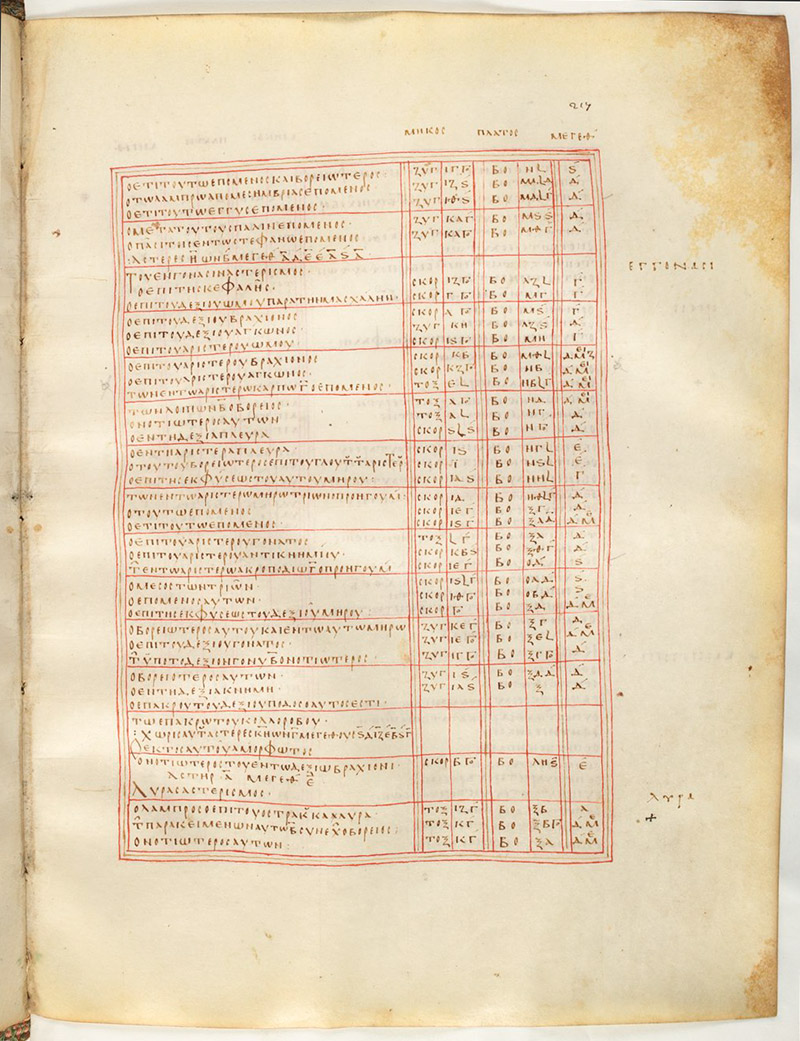A “Scientific” Approach: Ptolemy’s Catalogue of Stars

- Ptolemy’s Catalogue of stars (Almagest VII.5-VIII.1): Engonasin.
- Par. gr. 2389 (IX cent.), f. 217r; Paris, Bibliothèque nationale de France (BNF).
In his Almagest, Ptolemy devotes Books 7 and 8 to the fixed stars. He organizes all the stars known to him (that is, visible by the naked eye, which means with a magnitude up to 6) into 48 constellations, for a total of 1025 stars, for the date of 137 CE. The constellations retain their traditional names, already known through Aratus, Eratosthenes, and Hipparchus, with the addition of some new constellations, such as the Horse’s Head (no. 18) and the Southern Crown (no. 47).
Ptolemy organizes his catalogue into tables, as we see in this manuscript, which is one of the most important manuscripts of the Almagest, the Parisinus Graecus 2389, dating to the ninth century CE. The organization of data into tables shows a marked scientific attitude, as the focus is on clearly listing accurate data in an easily readable way, rather than on the style and ornamental details as was the case with the poetry of Aratus and his translators. Yet even Eratosthenes’ Catasterismi or the third book of Hyginus’ Astronomy, though written in prose and giving a list of stars belonging to each constellation, were mainly narrative texts. By writing a completely different genre (i.e., a scientific treatise), Ptolemy still connects his catalogue to the previous tradition, at least in part. In fact, in the first column each star is described as part of the traditional shape. The page shown here, for example, reports the description of the Kneeler. The constellation is not identified with Heracles but is simply “someone on the knees”, as it was for Hipparchus. Thus professional astronomers seem to ignore the stellar mythology that flourished around the fixed stars starting with Eratosthenes in the third century BCE, perhaps indicating again a more scientific attitude which discounted mythical narratives as incompatible with the science of stars.
After describing (column 1) each single star that belongs to a specific constellation, columns 2 and 3 report each star’s ecliptic longitude (column 2 gives the zodiac portion of the ecliptic, column 3 the degrees and fractions of degrees within it from 1 to 30), while column 4 and 5 report its ecliptic latitude (columns 4 specifies whether the latitude is north or south of the ecliptic, column 5 the degrees and fractions of degrees); column 6 lists the magnitude, which goes from 1 to 6, with 1 indicating the maximum of magnitude (i.e., brightness) and 6 the minimum.